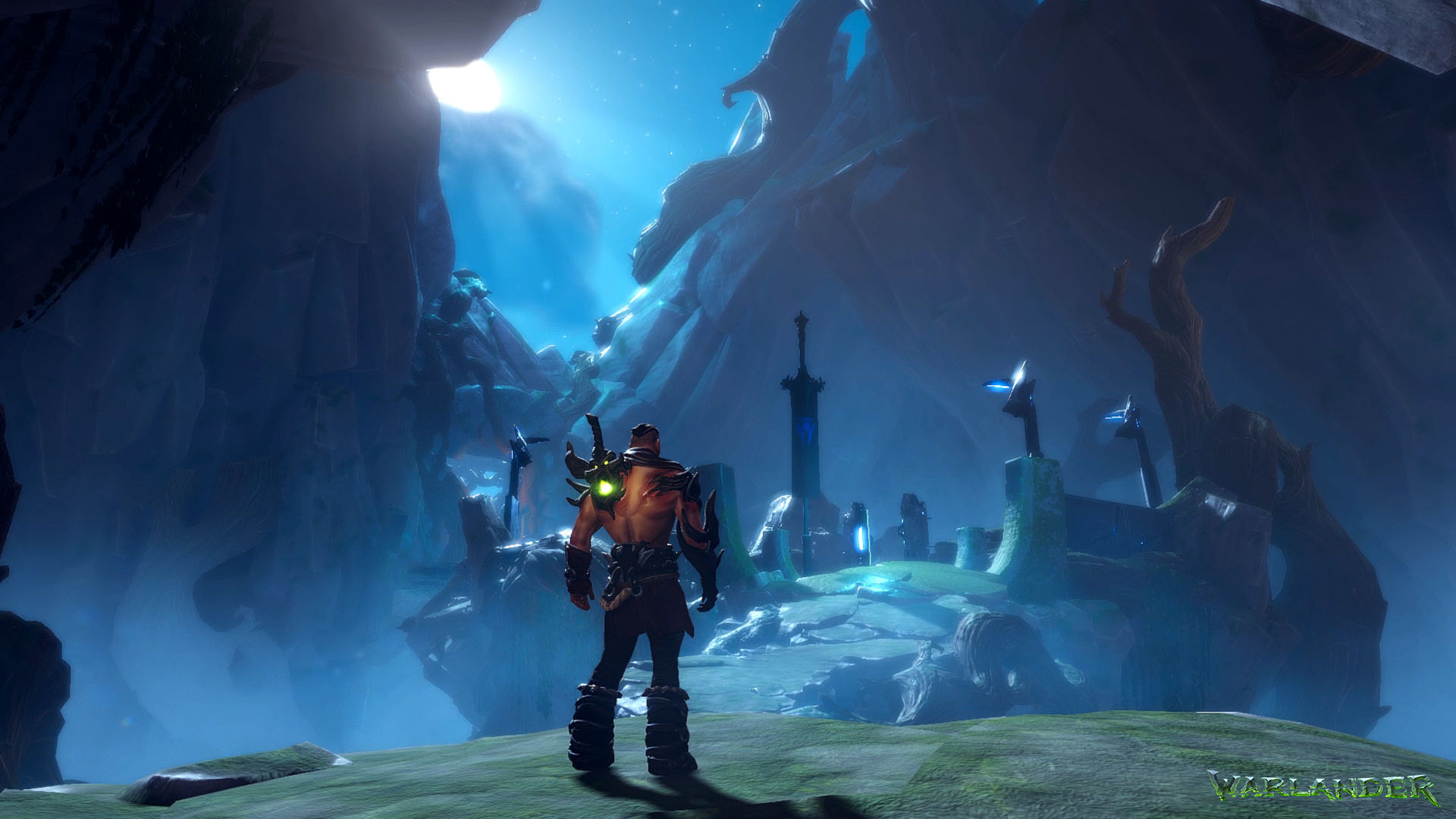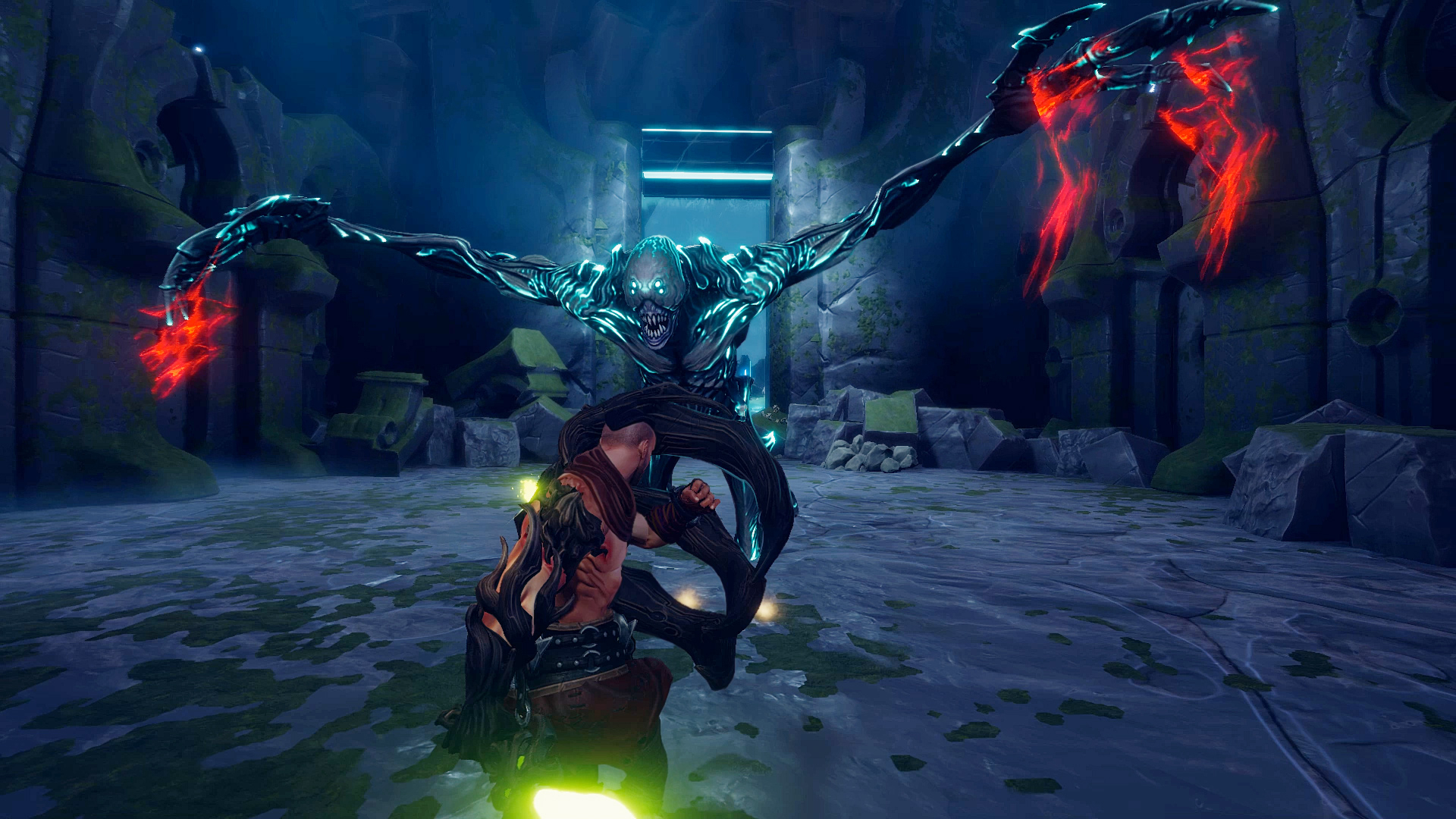
If a game can nail its combat mechanics and then put them front and centre with everything it does, it can be a visceral and truly satisfying experience. From everything that we’ve seen so far of the upcoming indie action title Warlander, it looks like that’s exactly what it’s willing to do, while sprinkling in some impressive looking visuals, role playing elements, and more. Curious to find out more about the game, we recently sent across a few questions about it to the development team at Clock Drive Games. The following questions were answered by the game’s creative director, Goran Rajisic.
"The pitch was basically “Aim with a cursor like you would aim down a gun sight and cut off what you want” and it sounded pretty straightforward on paper. In practice, this turned out to be very difficult for the team and a number of questions arose."
Being able to slice through enemies with precise aiming is something that sounds very appealing to prospective players, but on the development side of things, how hard has it been to implement a system like this, which sounds like it has to be quite precise, especially considering it encourages tactical and skilled action?
It was very challenging both technically and conceptually. The pitch was basically “Aim with a cursor like you would aim down a gun sight and cut off what you want” and it sounded pretty straightforward on paper. In practice, this turned out to be very difficult for the team and a number of questions arose. Which side does the sword come from? Can strikes be diagonal? What if a strike hits the wrong part on the way? How much control do the players have? And once they do hit a specific part, how is it different from hitting any other part? How does it benefit the player?
It took us a while to pinpoint all of the problems. We added armor as a “puzzle” element to combat, so players have to choose where to aim what not to hit. Headshots are similar to shooters – if you cut off the head, most enemies die will instantly. Slicing off legs makes enemies crawl and opens them for an execute move and so on. Mesh slicing itself was a very tricky aspect as well. Our developers had to cut a piece of flesh (mesh) and still keep the enemy moving. It is real time, unpredictable and caused us to reiterate the process many times.
It looks like the environment will also play a pretty important role in Warlander’s combat. Compared to the slicing mechanics though, would you say environmental manipulation is more an ancillary system, or do the two of them play an equally important role?
The environment will play an important role in Warlander. Some arenas will overwhelm the players if they do not use the environment to their advantage. If you are up against a few undead enemies combined with heavy armored troops and ranged casters, have a look around. Players can use their Forest Vine power to throw an enemy off the cliff. You can throw your sword at a barrier to drop a ton of stones on them. Or, use your Wooden Stake projectile and destroy an explosive tank in their vicinity, blasting them to bloody bits. See if the floor is unstable and crumbling, destroy it and a large group of enemies will meet their doom in the pits below.
However, we also want players to go toe-to-toe with enemies and face challenging duels. It’s about keeping the combat varied throughout the game, but also about letting the players choose their own preferred playstyle.
Besides the slicing mechanic and the environmental stuff, what other options do players have during combat, in terms of things like abilities and stuff?
During the early stages of the game, Bruce will learn to throw his sword and cut things in the distance. He will also obtain a Forest Vine power, that allows him to grab enemies and throw them around. Bruce will also get a projectile-like weapon called Wooden Stake, that is good for destroying enemy armor or for long-ranged headshots. We also added Druid Dash, a fast move that propels Bruce forward to a distant enemy. All of these powers will have their various branching upgrades.
"We want this to be a tale of blood and vengeance."
Can you talk us through the game’s progression mechanics? From what we’ve seen of Warlander, it looks like it’s got a pretty deep and expansive skill tree for players to sink their teeth into.
We have a literal skill tree in Warlander. It’s called the Devourer Tree and it will grant the players skills and upgrades that deepen the combat system. For example, you can upgrade your Forest Vine power to grab and launch enemies like projectiles or drain their health and replenish Bruce’s health pool.
Players will be able to extend the length of the blade and to increase the damage they deal. Unlock a power that freezes and still the enemies, allowing the players to slice them like jelly. Fury power splits your sword Ferguson in two and deal twice the damage. Upgrade your Kick to knock off powerful armor pieces that are giving you a hard time. Learn special moves like Slam, a jump attack that slices an enemy instantly and causes massive AOE damage. Upgraded Wooden Stake can rapidly fire projectiles or pierce through enemies or even nail them to the wall. Every specific power will have variations and powerful upgrades.
The players will have options to chase a particular path through the skill tree, choosing to focus on swordplay or upgrading stats of the player or getting and improving various druidic powers. Killing enemies rewards XP, but also specific cut-off body parts. You can also get XP and body parts from specialised chests throughout the levels.
Outside of combat, how much of an emphasis does Warlander put on things like exploration and puzzle solving?
We want this to be a tale of blood and vengeance. Exploration will be an important part of the levels – finding alternate paths and rewards like special buffs, additional lore, bonus XP and extra body parts, but there will be no puzzle solving.
What were the games that influenced you during the development of Warlander? Just looking at the combat itself, I imagine Metal Gear Rising is something that you guys would have looked at pretty closely.
Metal Gear Rising had the mesh slicing but it does not play like Warlander. It’s hard to pinpoint one game, but there are elements from Jedi Knight, that had players using swordplay and Force powers. Chivalry was also a good source of inspiration as it allowed players to attack enemies from different sides while aiming. Similar to Dark Souls we have stamina and timing as crucial tactical approach to combat.
But, we do have our own style that came from combining all of these elements. The goal was to give the player maximum control of the blade. We felt games seldom let you choose where your blows land. It is an immersive combat element that came out of it.
About how long is an average playthrough of Warlander going to be?
We are aiming at 7 – 9 gameplay hours. However, we are adding an Arena Mode that will test the players skill as we throw waves of enemies at them in a confined space, and this mode will be separate from the story portion of the game.
We are also discussing a Game+ option, and we will add it if it makes sense towards the end of development.
"We did not show off Warlander’s story in trailers or in the gameplay yet – though the Pre-Alpha Demo has a sprinkle of narrative in it – but yes, the story plays a crucial part in the game."
How much of an emphasis does the game put on its narrative and storytelling? Can you talk us through the central relationship between the protagonist and his sentient sword?
We did not show off Warlander’s story in trailers or in the gameplay yet – though the Pre-Alpha Demo has a sprinkle of narrative in it – but yes, the story plays a crucial part in the game. This is a single player, action-adventure title and we want our players immersed both in the story and in this dark science fantasy world we’re creating.
The relationship between the two central characters – Bruce the protagonist and Ferguson the sentient sword – is one of the fundamental arcs that will drive the story. We cannot reveal much without any spoilers, but Bruce and Ferguson will begin the game as servant and master, yet their relationship will develop as the game progresses. Also, through their relationship the players will be able to experience moral dilemmas, consequences of making some very hard choices, as well as questions of free will, servitude, persistence and the issue of choice between the lesser of two evils.

















